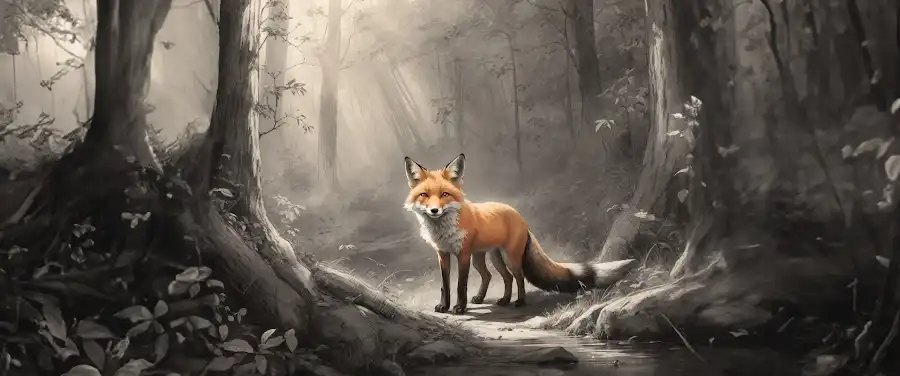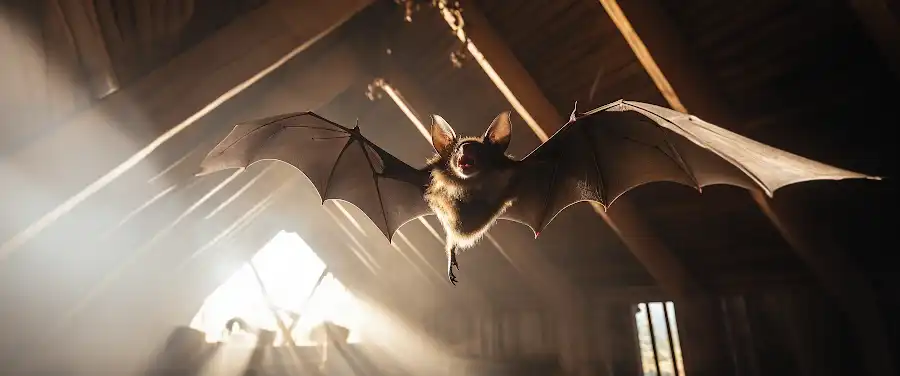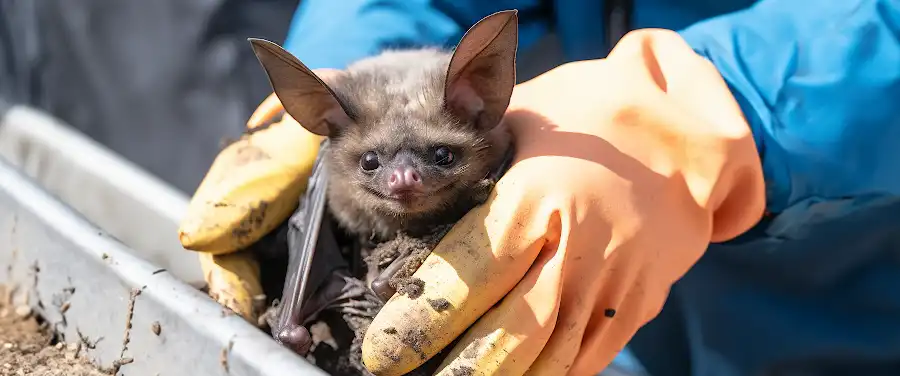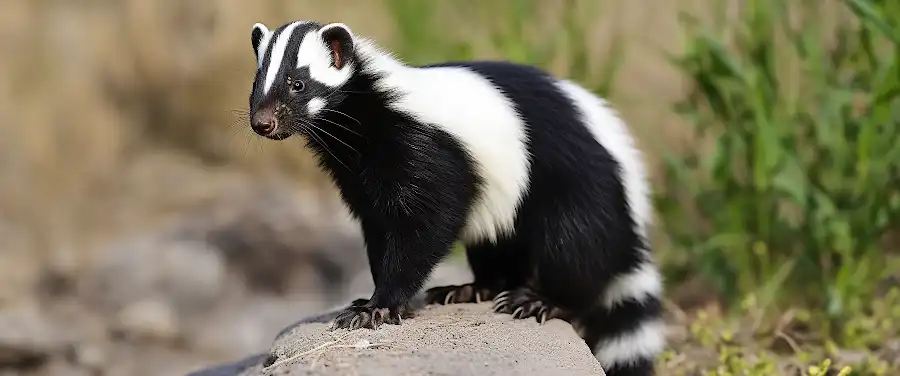
As twilight falls across Central Florida, you might just catch the sight of a small, furry creature rummaging through your backyard. With distinct black-and-white coloration and a reputation that precedes them, skunks are perhaps some of the most famous nocturnal visitors to our homes, yet few of us truly understand these unique creatures, far less be able to identify the species that populate our state. This article, enriched with interesting tidbits and helpful insights, seeks to demystify these infamous animals, digging deeper into the world of skunks, their various species, and their behaviors.
Being sprayed by a skunk is a story many outdoor enthusiasts and unfortunate homeowners have told with a disgusted grimace. Despite their notorious scent, these animals are full of surprises and are far more sophisticated than we often credit them for. Their species vary in size, habitat, and behaviors – each with its unique traits. But how do you differentiate a striped skunk from an eastern spotted skunk or discern the impact each species has on your property? Let’s embark on an exploration to answer these questions and bring you closer to the often-misunderstood world of skunks.
As we navigate this journey, we will uncover fascinating facts, debunk prevalent myths, and provide tips to manage any skunk-induced damages. We’re on a mission to elevate your understanding of these creatures beyond the storytelling of pesky backyard invaders to carriers of ecological importance. Now that we’re ready to embark on this exploratory journey, let’s dive into understanding what skunks really are, and why identifying them correctly is so crucially important.
How Many Skunk Species are There?
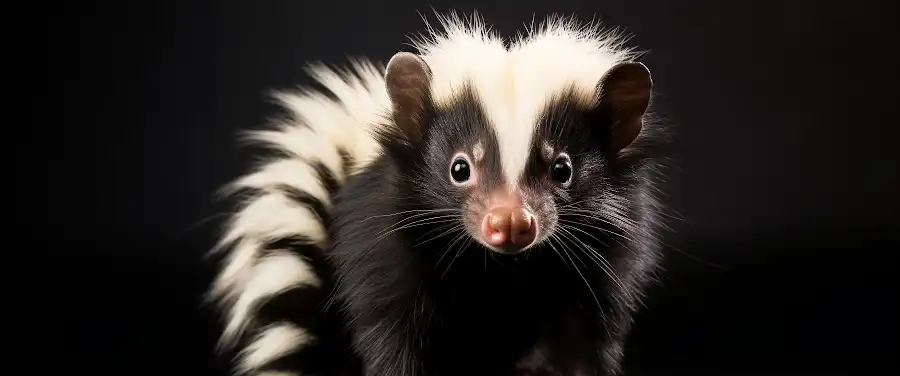
Just like any other type of animal, skunks come in many shapes and sizes, each with their unique characteristics. Now you might wonder how many different skunk species exist in the world. Approximately 12 extant (or currently existing) skunk species worldwide belong to four genera: Spilogale, Mephitis, Conepatus, and Mydaus. The vast range of skunk species isn’t only varied in terms of physical characteristics, habitats, and behavioral traits.
What are the Most Common Skunk Species?
Let’s dive deeper and take a look at some of the most common skunk species found, especially in Central Florida.
- The Striped Skunk (Mephitis mephitis) is probably the most recognizable, known for its distinctive black body with white stripes that run down its back and tail. This omnivorous creature is nocturnal and prefers open areas with mixed habitats for its home.
- The Eastern Spotted Skunk (Spilogale putorius) is smaller in size and has a more varied pattern of spots and stripes. It is well known for its “handstand” threat display, certainly a marvel to witness!
- The Hooded Skunk (Mephitis macroura) has a broad, white hood and bushy tail. It is primarily found in the southwestern United States, although it reaches as far as Central Florida.
- Lastly, the Western Spotted Skunk (Spilogale gracilis), which mainly sticks to the western region of the U.S. It’s black in color with a distinctive white pattern, helping it stand apart.
The aforementioned skunks differ in many ways – their habitats, behaviors, and even little nuances in their appearances. While some might find a home in open areas, others love the dense forests or scrublands. However, their ability to adapt to different environments is truly remarkable, showing nature’s wonderful diversity.
What are the Rare or Lesser Known Skunk Species?
Apart from these common ones, there are rare skunk species as well. Species such as the Himalayan stink badger and the Sunda stink badger are lesser-known, mainly due to their habitats. They are found in the Southeast Asian tropical rainforests and are relatively difficult for humans to observe directly. The stink badgers belong to two species, Mydaus javanensis and Mydaus marchei, and are famous for their incredible stench.
These uncommon skunks display unique traits that, unfortunately, are under-studied due to their remote habitats and elusive behavior. For a comprehensive study on the diverse family of skunks, consider visiting the Animal Diversity Web.
As we have learned, understanding different skunk species is more than just recognizing a familiar smell. It’s about appreciating the diversity of these animals and their significant role in the environment. Next, we will delve into the remarkable behavioral traits of these skunks, demonstrating how to identify them not just by their appearance, but their actions, too.
How to Identifying Skunks by their Behavior?
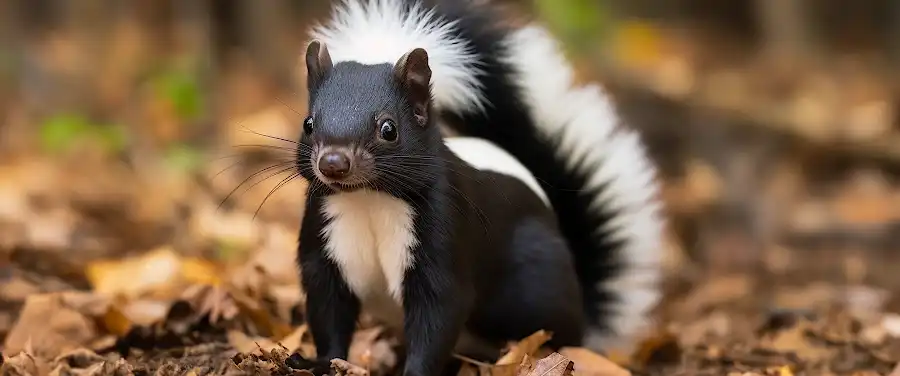
Just like humans, each skunk species exhibits unique behavioral traits enabling both hunters and nature enthusiasts in species identification. Recognizing these distinguishing behaviors not only helps minimize property damage but also supports a thriving local ecosystem.
The Basics of Skunk Behavior
Skunks are most known for their stinky defense mechanism. However, their behavior extends beyond just spraying predators. Generally, skunks are nocturnal, preferring to forage at night for insects and small rodents, their primary food sources. They’re also solitary creatures who only group during the mating season.
The composite table below provides a quick overview of the general traits common to most skunk species.
| Behavior | Description |
|---|---|
| Nocturnal | Active primarily during the nighttime. |
| Solitary | Prefer to live alone, except during mating season. |
| Omnivorous | Eat both plants and animals, mostly insects and small rodents. |
| Defensive | Use a pungent spray to ward off predators. |
Dissecting the Trait Differences
There are prominent variances in behavior among the different skunk species. Striped skunks, for example, are more suburban and have adapted to live near humans. They’re also known for their burrowing activities, which contribute to soil aeration but may result in damaging lawns and gardens.
On the other hand, spotted skunks are highly acrobatic, adopting a handstand posture while threatening to spray. Unlike striped skunks, they prefer wooded areas and rocky terrains, consequently causing less damage to human properties.
Behavior as a Clue to Skunk Species
Footprints, droppings, and damage patterns can tell us about the presence of skunks. But aligning these signs with unique behavior traits provides a clear road map for identifying skunk species. For instance, if you notice skunk-like damage but only in a garden or lawn within a suburban area, the culprit is likely a striped skunk.
Understanding skunk behavior isn’t just for species identification; it aids in damage management. If property damage arises from a striped skunk’s burrowing, targeted humane relocation away from populated areas might be the appropriate solution.
For more in-depth knowledge about skunks, the Humane Society’s web page on skunks is an invaluable resource.
That’s it on skunk identification via behavioral means. But, our journey in the skunk-verse does not end here. Let’s delve deeper into other factors defining skunks – like their role and impact on the ecosystem. Stay tuned!
To give you an idea of the average costs and types of damage associated with rodent infestations, have a look at the following table:
Understanding the Skunk’s Role and Impact on Ecosystem
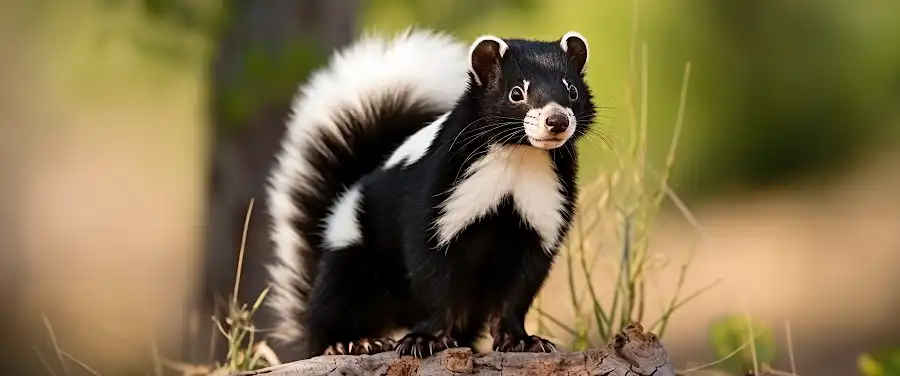
Meet the humble skunk, a creature often given a wide berth due to its notorious defensive spray. But did you know that this black and white fur-ball plays a crucial role in the ecological balance of our environment in Central Florida? They’re not simply spray-producing machines; they hold a significant and often underestimated position in the food chain.
Skunks, like any other creature, are part of the grand tapestry of life, each active in their unique way. They particularly help control pest populations, feeding on a variety of small insects, rodents, eggs, and even some vegetation. This proves beneficial for farming and residential areas alike, as their diet reduces the number of potential pests. They essentially act as natural pest controllers, helping to maintain a bugs-below-boiling-point balance.
However, skunks can sometimes cause damage. They are known to dig holes in search of food, disturbing residential and commercial landscapes. Furthermore, skunks are carriers of certain diseases, such as rabies, which may pose a risk to humans and pets.
But it’s not all doom and gloom! Strategic trapping and removal services, coupled with damage prevention strategies can mitigate these possible damages. According to Florida Fish and Wildlife Conservation Commission, relocation of trapped skunks can help control the population and minimize the potential for property damage and health risks.
Their role is indeed a double-edged sword, while they contribute beneficially to our ecosystem, they also present potential challenges. Undeniably however, skunks have their place in the ecological system, having both positive and negative impacts. Understanding the ecological benefits and skunk impacts is certainly the first step towards a respectful co-existence.
With that being said, let’s now transition seamlessly into discussing the types of damage skunks can cause and some strategies for skunk management.
Conclusion
So there you have it, an in-depth guide to identifying skunk species in Central Florida. By now, you should have a better understanding of the different types of skunks and their characteristic traits.
Not only can you recognize a striped skunk from a spotted one, but you are also aware of the damage they can cause if their population isn’t properly managed. It’s not just about the foul odor they emit – don’t forget about their potential to harm farm crops and residential yards!
But remember, these creatures aren’t our enemies. As much as we would prefer them to maintain a respectful distance, skunks are valuable contributors to our ecosystem. They help control pest populations, plus, their digging behaviors often lead to soil aeration.
Management of skunk populations doesn’t mean getting rid of them entirely, but rather finding ways to coexist with them more sustainably. So, appreciate them for the role they play in nature, just maybe from a safe distance!
This recognition and understanding of your natural environment is a step towards more responsible living. It’s the small actions and knowledge that counts. Let’s keep appreciating nature’s diverse cast of characters, one skunk at a time!
So next time when you spot one of those black and white creatures in your backyard, take a moment to identify the species and remember, they are a crucial part of our ecosystem. That’s it from us on identifying skunk species in Central Florida, and the importance of their damage management. Until next time, stay curious and keep exploring.
Remember, understanding is the first step towards coexistence, so let’s respect our striped neighbors all while managing our spaces.

